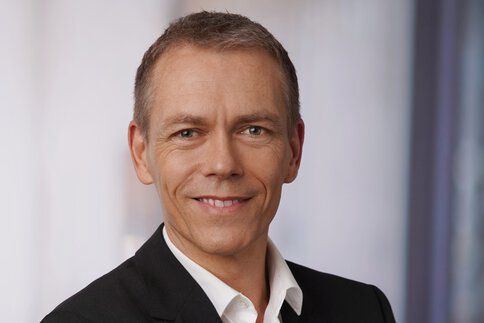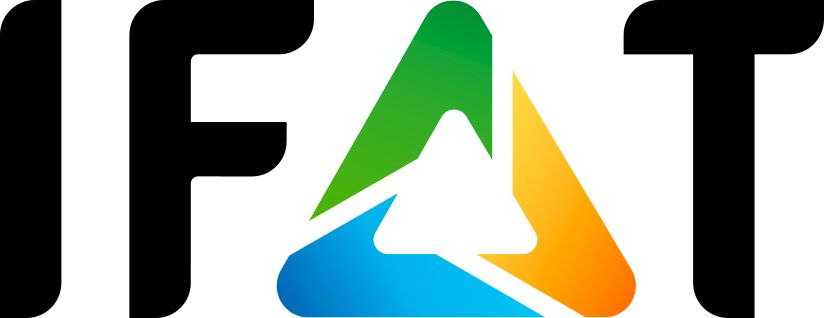Ultrapure water for green hydrogen
The provision of ultrapure water is of fundamental importance for the production of green hydrogen. In this interview, Dr.-Ing. Gerd Sagawe, Edwin Locker and Dr. Daniel Frank, three experts from the German water technology sector, explain some of the key issues.
What properties must the water used in the production of green hydrogen have?
Gerd Sagawe: Before water can be fed into the electrolyser to produce hydrogen, it must be processed into ultrapure water in line with the state of the art. For example, dissolved substances, organic material, fine particles, or carbon dioxide must be removed as far as possible. If water of insufficient purity is used, the electrolyser may become contaminated or damaged and hence the efficiency of the system also impaired.
What methods are required for this pre-treatment?
Edwin Locker: Various combinations of conventional process water treatment methods are used depending on the type of water resource used and the specific requirements of the respective hydrogen production plant. In addition to reverse osmosis, these can include filtration, softening, membrane degassing, electrodeionization, UV irradiation, and mixed-bed demineralization.
How are the supplier and customer groups structured?
Edwin Locker: Customers for the water treatment systems are, on the one hand, the manufacturers of the electrolysers and, on the other, system integrators, in other words, companies that purchase all the components—including the electrolysers—and use them to create a complete package for their customers.
Gerd Sagawe: On the supplier side, hydrogen production generally has the potential to bring practically all the players in industrial water management together, so not only planners and plant manufacturers, but also producers of measurement and automation technology, pumps, pipelines, and fittings, and other component manufacturers. Added to that are research institutes and associations. Ideally, companies can open up new, international fields of business and activity here. That is why we are jointly involved in the German Water Partnership in the Industrial Water Management Working Group on the topic of water for hydrogen production. The topic of hydrogen is being addressed in almost every country in which German companies are active, especially in the Middle East, on the African continent, and in Asia.
Mr. Locker, what significance does this business area currently have in your overall activities and where is it heading?
Edwin Locker: In terms of sales, hydrogen production still plays a subordinate role as a field of application for our ultrapure water production technologies compared to the pharmaceutical or semiconductor industries. Sales expectations are, however, much higher. For example, we are currently producing a system for a well-known German automotive supplier that now also manufactures electrolysers and wants to test them with “our” ultrapure water. We are continuing to receive numerous requests both for large, centralized electrolysers in the range of several hundred megawatts, and for smaller, decentralized systems, for example, in connection with offshore wind energy use. Companies are currently in the process of finding what’s best for them, which makes it difficult to predict specific market development at the moment.
Which types of water resources are currently mainly used in ultrapure water production for hydrogen production?
Edwin Locker: The water for the electrolysis currently comes from traditional freshwater sources such as groundwater, rivers or lakes and is already of drinking water quality at the start of the ultrapure water treatment in the vast majority of cases.
How much water is needed to produce one kilogram of hydrogen?
Daniel Frank: According to the German Technical and Scientific Association for Gas and Water (DVGW), 1 kg of hydrogen can be produced from 10 kg of ultrapure water by electrolysis. To produce this amount of ultrapure water, 12 to 13 kg of surface water are required. That doesn’t include the need for cooling the electrolysis plant.
Will this demand result in a conflict of use for drinking water, which is already scarce in many cases, with the greatly expanded hydrogen economy planned for the future?
Gerd Sagawe: Basically, even a significant increase in the production of green hydrogen via electrolysis will only require a fraction of the amount of water required by other user groups such as agriculture or the public water supply. Nevertheless, competition for drinking water in particular must be avoided through the use of alternative resources. Promising sources are seawater and, in part, also brackish or river water. Wastewater from industry or municipalities can also be considered. This is all technologically feasible, but in the end it’s a question of cost and price. In addition, factors such as water availability and local environmental regulations are crucial for actual implementation.
What challenges does the use of these alternative water sources entail?
Edwin Locker: Basically, the more impure the raw water used is, the more complex it is of course to bring it up to ultrapure water level. In the case of seawater, for example, the removal of the salt content alone results in a very high energy consumption. Furthermore, an environmentally friendly solution needs to be found for the concentrated, partly warm brines as residual material. The hydrogen economy should also proactively address this issue.
Another crucial factor is reliability. While seawater always has roughly the same properties, the composition of wastewater, for example, can vary considerably. Many further treatment steps are required to ensure that ultrapure water production functions reliably under these conditions. If water is to be reused, defined industrial wastewater would be the most likely option in terms of the complexity of the system.
What do you currently see as groundbreaking projects for the future production of green hydrogen?
Gerd Sagawe: The H2Mare flagship project funded by the Federal Ministry of Education and Research aims to use the electricity produced by offshore wind turbines with no grid connection to generate hydrogen and other Power-to-X products directly at sea. Water treatment and water supply methods for the electrolysis are also being developed in the project.
Daniel Frank: There are energy and hydrogen partnerships between Germany and a number of countries, including Namibia since 2021. The country is pursuing ambitious goals to develop the production of green hydrogen and export it via derivatives to Germany and other European countries, among others. The aim of the GreeN-H2 Namibia project funded by the Federal Ministry of Education and Research is to follow the relevant developments in order to identify the associated economic, social and environmental risks and overcome barriers that stand in the way of sustainable development.
About the interviewees
Dr. Ing. Gerd Sagawe is an independent management consultant in the partner network of Dr. Weber & Partner GmbH (Frankfurt/M.), specializing in water, wastewater, energy and environmental technology. He is also a board member of the German Water Partnership (GWP). In this network of the German water sector with a strong international focus, he heads the Industrial Water Management Working Group.

Edwin Locker is Managing Director of Herco Wassertechnik GmbH in Freiberg am Neckar, Germany. The company focuses on water treatment technology with the emphasis on membrane technology. Its products include filters, water softeners, ultrafiltration units, reverse osmosis units, and accessories for various industrial applications.

Dr. Daniel Frank is Senior Advisor Water Management at DECHEMA, Gesellschaft für Chemische Technik und Biotechnologie e.V. in Frankfurt/M, Germany. At GWP e.V., he holds the position of Deputy Head of the Industrial Water Management Working Group.


In the IFAT Munich 2024 event program, the three experts spoke about the synergies between water resources and hydrogen production under the title “Water and its Role for Green Hydrogen: Solutions Made in Germany”.
